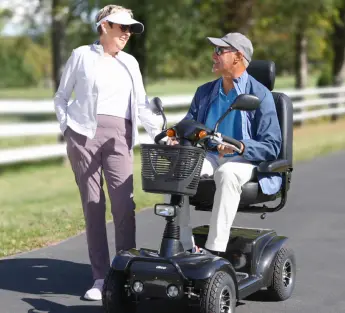Wheelchair Armrest Choices
Learn the basics behind the variety of armrests offered and how your choice could impact your life.
|
The decision to use armrests on a wheelchair is strictly up to you and what makes you comfortable. Many active wheelers believe that armrests get in the way of function and the ability to sit at tables and desks. They also don’t want an additional part to increase the chair weight. Armrests do offer some benefits, however. Armrests allow you to rest your arms at a height that is higher than your lap. When you place your arms on the armrests, you take the pull of gravity off your arms and shoulders. The extra weight of the arms might actually pull you forward, causing a slouched posture. With the weight of your arms resting on the armrest, you might be able to straighten your spine and sit more upright. Armrests are also used to support trays and one-sided arm supports. There are a variety of armrests to choose from. Some can flip up or be removed. Lower priced chairs do not offer this option and might have only a fixed height and be non-removable. This might interfere with transfers and might not be at a correct height to provide you with optimal arm support. For instance, if the armrests are too low, it will encourage your body to lean forward. If the armrests are too high, you might have to raise your shoulders just to get the arms on the armrests. Armrests that are too high might also dig into your armpits. Here are some considerations based on your armrest choices: Attachments for armrests:
Armrest style:
Armrest pads: The armrest pads attach to the armrests. They can be padded upholstered, hard plastic or a self-skinned composite material. The non-padded upholstered pads might be a better choice if a tray is going to be added so the tray will not rip the padding. |
| Shop for a wheelchair |





 Contact Us
Contact Us
 M-F 9am - 5pm ET
M-F 9am - 5pm ET
 Request parts
Request parts Request Service
Request Service